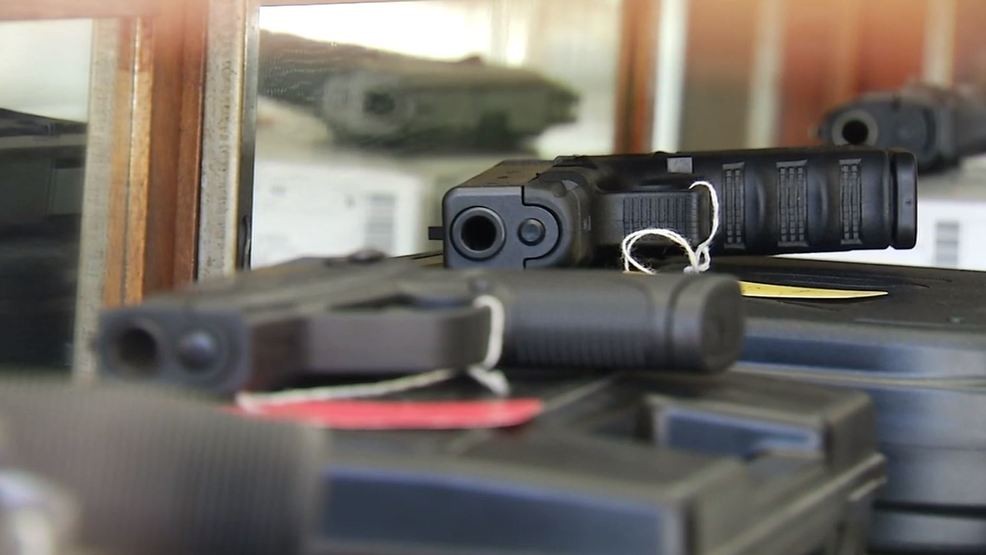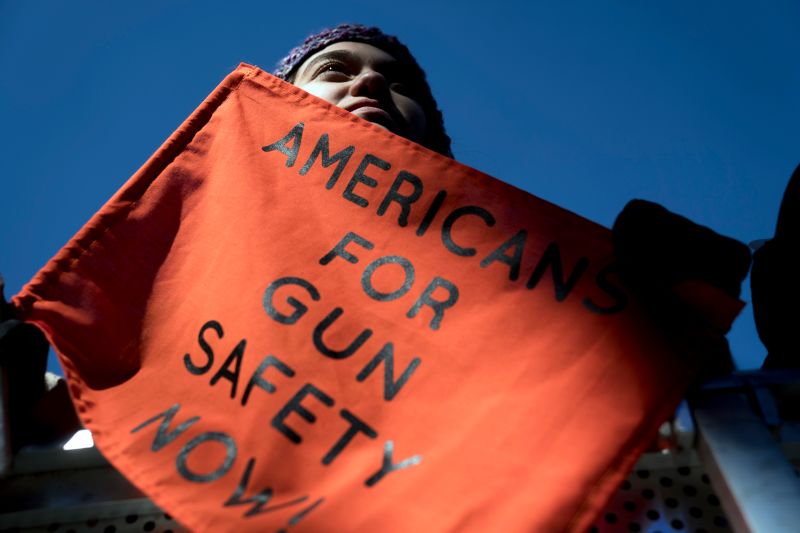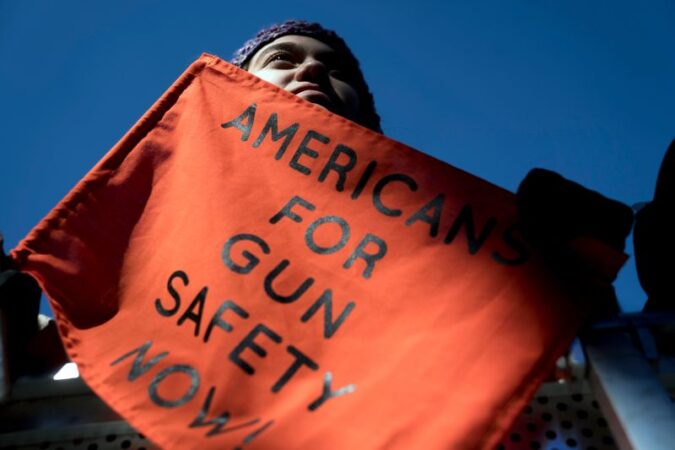What is a red flag law – What are red flag laws? These laws, also known as extreme risk protection orders, aim to temporarily remove firearms from individuals deemed a danger to themselves or others. They provide a legal framework for concerned family members, law enforcement, or mental health professionals to petition a court for the temporary removal of firearms from individuals exhibiting warning signs of potential violence.
Red flag laws have sparked debate and controversy, raising complex legal and constitutional questions. The core argument in favor of these laws centers on preventing gun violence by temporarily removing firearms from individuals who pose a risk to themselves or others. Opponents argue that red flag laws infringe on Second Amendment rights and can be misused to target individuals unfairly.
Definition of Red Flag Laws

Red flag laws, also known as extreme risk protection orders (ERPOs), are a type of gun control legislation designed to temporarily remove firearms from individuals deemed to be a danger to themselves or others. These laws allow law enforcement or family members to petition a court to issue an order that temporarily restricts an individual’s access to firearms.
The purpose of red flag laws is to prevent gun violence by addressing situations where individuals pose an imminent threat to themselves or others. They are intended to provide a mechanism for intervening in cases where traditional law enforcement methods may not be sufficient or timely.
Examples of Red Flag Laws
Red flag laws have been enacted in various jurisdictions across the United States, with varying provisions and procedures. Here are some examples:
- California: California’s law allows family members, roommates, or law enforcement to petition a court for a gun violence restraining order (GVRO) if they believe an individual poses a danger to themselves or others. The order can restrict the individual’s access to firearms for up to 21 days, and can be extended for up to one year if the court finds probable cause.
- Connecticut: Connecticut’s law allows family members, roommates, or law enforcement to petition a court for an extreme risk protection order (ERPO) if they believe an individual poses a danger to themselves or others. The order can restrict the individual’s access to firearms for up to one year, and can be extended for additional periods.
- Florida: Florida’s law allows family members, household members, or law enforcement to petition a court for a risk protection order (RPO) if they believe an individual poses a danger to themselves or others. The order can restrict the individual’s access to firearms for up to one year, and can be extended for additional periods.
How Red Flag Laws Work
Red flag laws, also known as extreme risk protection orders (ERPOs), are designed to temporarily remove firearms from individuals deemed to be a danger to themselves or others. They provide a legal mechanism for concerned family members, friends, or law enforcement to petition a court to order the removal of firearms from an individual who poses a risk.
Process of Enacting Red Flag Laws
The process of enacting a red flag law involves a legislative process that typically begins with a bill being introduced in the state legislature. The bill then goes through a series of hearings and debates, with amendments often being made along the way. If the bill is approved by the legislature, it is then sent to the governor for their signature. The governor can choose to sign the bill into law, veto it, or allow it to become law without their signature.
Obtaining a Temporary Restraining Order or Gun Seizure, What is a red flag law
To obtain a temporary restraining order or gun seizure under a red flag law, a petitioner must demonstrate to a court that there is probable cause to believe that the individual poses a significant risk of harming themselves or others. This usually involves presenting evidence such as:
- Statements made by the individual expressing suicidal or homicidal thoughts.
- Threats made to others.
- A history of violence or mental health issues.
- Recent acts of violence or self-harm.
Role of Law Enforcement, Courts, and Mental Health Professionals
Law enforcement officers play a critical role in red flag law proceedings. They may be involved in the initial investigation, serving the restraining order, and seizing firearms. Courts are responsible for reviewing the evidence presented by the petitioner and making a determination about whether to issue a temporary restraining order. Mental health professionals may be involved in assessing the individual’s risk of violence and providing recommendations to the court.
Procedures for Obtaining a Restraining Order
- Petition Filing: A concerned individual files a petition with the court, outlining the reasons why a temporary restraining order is necessary.
- Hearing: The court holds a hearing to determine if there is probable cause to believe the individual poses a risk.
- Evidence Presentation: The petitioner presents evidence to support their claims, while the respondent (the individual whose firearms are being sought) can also present evidence in their defense.
- Restraining Order Issuance: If the court finds probable cause, it may issue a temporary restraining order, prohibiting the respondent from possessing firearms.
- Seizure of Firearms: Law enforcement officers will then seize the respondent’s firearms, which may be held by the court or a designated law enforcement agency.
- Final Hearing: A final hearing is held within a specified timeframe, usually within a few weeks, to determine if the restraining order should be extended.
Key Considerations
Red flag laws are a relatively new development, and their effectiveness is still being debated. Some critics argue that they violate the Second Amendment right to bear arms, while others contend that they are necessary to prevent gun violence.
“The debate over red flag laws is complex and multifaceted, with strong arguments on both sides. It is important to consider all perspectives and weigh the potential benefits and drawbacks before forming an opinion.”
Legal and Constitutional Issues: What Is A Red Flag Law

Red flag laws have sparked significant legal debate, raising questions about their constitutionality and their potential impact on Second Amendment rights. These laws, designed to temporarily remove firearms from individuals deemed a danger to themselves or others, have faced legal challenges from various groups, including gun rights advocates.
Second Amendment Rights and Red Flag Laws
The Second Amendment to the U.S. Constitution guarantees the right to bear arms. However, this right is not absolute and has been subject to various interpretations and limitations over time. Red flag laws, which allow for the temporary removal of firearms from individuals deemed a danger, raise questions about how they balance the Second Amendment with public safety concerns.
“A well regulated Militia, being necessary to the security of a free State, the right of the people to keep and bear Arms, shall not be infringed.” – Second Amendment to the U.S. Constitution
- Gun Rights Advocates’ Arguments: Gun rights advocates argue that red flag laws infringe upon the Second Amendment by allowing the government to seize firearms without due process of law. They contend that these laws violate the presumption of innocence and create a system where individuals can be deprived of their rights based on allegations rather than proven guilt.
- Proponents’ Arguments: Proponents of red flag laws argue that they are necessary to prevent gun violence and protect public safety. They contend that these laws provide a temporary mechanism to address imminent threats without violating due process rights. They emphasize that red flag laws typically involve a court hearing where individuals can present their case and challenge the allegations against them.
Legal Precedents and Court Decisions
The constitutionality of red flag laws has been challenged in various courts, with mixed results. Some courts have upheld the laws, while others have raised concerns about their constitutionality.
- Caetano v. Massachusetts (2016): The Supreme Court upheld a Massachusetts law prohibiting the possession of firearms by individuals convicted of certain violent crimes. This case established that the Second Amendment does not protect all types of weapons and that the government can regulate firearms to protect public safety.
- District of Columbia v. Heller (2008): This landmark case recognized an individual’s right to possess a firearm for traditionally lawful purposes, such as self-defense in the home. However, it also affirmed that the Second Amendment is not absolute and that the government can regulate firearms.
Public Opinion and Debate
Public opinion on red flag laws is complex and often polarized, reflecting the broader debate on gun control in the United States. Surveys and polls offer insights into public sentiment, while arguments both for and against these laws highlight key perspectives.
Public Opinion on Red Flag Laws
Public support for red flag laws is generally high, with polls consistently showing a majority of Americans favoring these measures. A 2020 Pew Research Center survey found that 72% of Americans support red flag laws, including 88% of Democrats and 53% of Republicans. Similar findings emerged from a 2019 poll by the Associated Press-NORC Center for Public Affairs Research, which found that 69% of Americans supported red flag laws.
Arguments for Red Flag Laws
Advocates for red flag laws argue that these measures are a critical tool for preventing gun violence and protecting public safety. They contend that red flag laws provide a legal mechanism to temporarily remove firearms from individuals who pose an imminent threat to themselves or others, preventing potential tragedies.
- Prevent Gun Violence: Proponents argue that red flag laws can help prevent mass shootings and other acts of gun violence by temporarily removing firearms from individuals who exhibit warning signs of potential violence. They cite examples of cases where red flag laws have successfully prevented tragedies, such as the case of a man in Florida who was barred from possessing firearms after making threats against his family, ultimately preventing a potential shooting.
- Protect Public Safety: Red flag laws are seen as a way to enhance public safety by providing law enforcement with a legal tool to intervene in situations where individuals are deemed a danger to themselves or others. They argue that these laws can help address the issue of mental health and gun violence, providing a means to prevent potential harm before it occurs.
- Due Process and Rights: Supporters maintain that red flag laws are consistent with due process and constitutional rights, emphasizing the importance of procedural safeguards to ensure fairness and prevent abuse. They argue that these laws provide for a hearing before a judge, allowing individuals to present their case and challenge the removal of their firearms.
Arguments Against Red Flag Laws
Opponents of red flag laws argue that these measures infringe on the Second Amendment right to bear arms, raising concerns about due process and potential for abuse. They express concerns about the potential for misuse and argue that red flag laws could be used to unfairly target individuals based on subjective criteria or personal biases.
- Second Amendment Rights: Critics argue that red flag laws violate the Second Amendment right to bear arms, claiming that they allow for the government to confiscate firearms without due process or a fair trial. They argue that these laws represent an erosion of individual rights and a step towards government overreach.
- Due Process Concerns: Opponents express concerns about the potential for abuse and argue that red flag laws lack sufficient due process safeguards. They argue that these laws can be used to unfairly target individuals based on hearsay or unsubstantiated claims, without the right to confront their accusers or present evidence in their defense.
- Effectiveness and Impact: Some critics question the effectiveness of red flag laws in preventing gun violence, arguing that there is insufficient evidence to support their impact. They point to the limited data available and argue that these laws may not be an effective solution to the problem of gun violence.
Last Word

Red flag laws present a complex and multifaceted issue with compelling arguments on both sides. The debate revolves around balancing public safety with individual rights, and it’s essential to carefully consider the potential benefits and drawbacks of these laws. As the conversation surrounding red flag laws continues, it’s crucial to engage in respectful dialogue and seek solutions that effectively address the concerns of all stakeholders.
FAQ Section
What are the legal requirements for obtaining a red flag order?
The specific requirements vary by state, but generally involve a showing of probable cause that the individual poses a significant risk of harm to themselves or others. This usually requires evidence of threats, violence, or concerning behavior.
Who can petition for a red flag order?
The individuals authorized to petition for a red flag order also vary by state. Typically, it can be family members, law enforcement officers, or mental health professionals who have a direct relationship with the individual.
What happens to the firearms seized under a red flag order?
The firearms are usually held in secure storage by law enforcement or a designated third party until the order expires or is lifted by a court.
